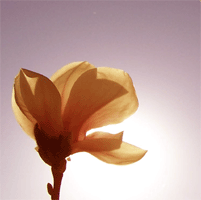
Samkhya and the Classical Yoga of the Yoga Sutras are dualistic philosophies. Very few yoga teachers today realize this. In the West, dualism has been entrenched in our religions for over three thousand years. This dualism is easily seen in the metaphor of the clockmaker: God is the great clockmaker and this universe, and everything in it, is his wondrous invention, the clock. God is outside of the machine. In the Samkhya tradition there is purusha and there is prakriti, and these two are as separate as the clockmaker and the clock. Purusha is the soul, the Self, pure consciousness, and the only source of consciousness. The word literally means “man.” Prakriti is that which is created. It is nature in all her aspects. Prakriti literally means “creatrix,” the female creative energy.
Unlike in the Western religions, purusha did not create prakriti; in fact, if given a choice, purusha would prefer to have never met prakriti at all. But purusha is responsible for prakriti becoming animated, alive.
Samkhya philosophy holds that there are countless individual purushas, each one infinite, eternal, omniscient, unchanging, and unchangeable. There is no single purusha that sits hierarchically above any others. There is no creator god, no puppet master pulling any strings. Since purusha is pure consciousness, it follows that prakriti is unconscious. Prakriti is everything that is changing. Prakriti is not just the physical aspects of the universe that we can sense; it is our very senses themselves – our thoughts, memories, desires, and even our intelligence. Prakriti is everything that is that isn’t conscious. Consciousness resides only in purusha, or more properly, as purusha.
Purusha, pure and distant, is beyond subject and object. One cannot understand purusha, for that would make it an object. Purusha cannot know or understand anything either, for that would make purusha a subject. Purusha simply just is. But, because of the presence of prakriti, purusha gets attracted to nature in the way a man is attracted when he watches a beautiful woman dancing. He cannot help but try to get closer. And then the disaster occurs: purusha becomes trapped inside prakriti. Like Brer Rabbit when he touches the sticky baby in the old folk tale with Brer Fox, purusha gets more and more entangled in prakriti. Soon purusha forgets that it was ever separate and ceases to struggle to regain its freedom.
The union of purusha and prakriti was a horrible mistake. This unfortunate marriage should never have happened. The only remedy: a fast and thorough divorce! Like Brer Rabbit, the only way to be freed from the sticky baby is to be thrown into the briar patch where we can scrape off prakriti and finally free ourselves. The briar patch is the practice of yoga.
Samkhya and Classical Yoga are not about union. The yoga of the Yoga Sutra is about getting a divorce, as quickly as possible. If you don’t do it now, you will have to come back again and again, suffering countless new lives, until you finally get that divorce and are free at last. [1]
Purusha is easy to comprehend; we all seem to have an instinctive or intuitive understanding of the concept of soul or consciousness, even if we cannot describe it exactly. But prakriti is a bit more foreign. What is prakriti made of? Let’s take a closer look at the underlying strands of prakriti.
- — It is curious how in the Eastern philosophies reincarnation is something to be avoided at all costs. To live again and again in this sorrowful world is unbearable. True joy, bliss, ananda is obtained only when we are free from the cycles of rebirth. In the West, reincarnation is considered a blessing. We are comforted with the thought that we won’t really die when this body fails us. We are coming back again, and again, and again, to enjoy the cycles of life. The difference in these two views is the emphasis on what it is that is reincarnated. In the West we dearly hope it is our ego that survives to the next life. We are drawn to stories of how someone can remember her past life, hoping this means that something of the person that we are now will still be around in some future incarnation. In the Eastern view, nothing natural survives from one life to the next. By natural we mean nothing of nature, of prakriti. What returns is the soul, stained as it was by the karma of prior lives. Only once these stains are removed, through the discipline of yoga, can the soul truly be free to stay away from nature’s clutches.
(Next: The Three Gunas )
